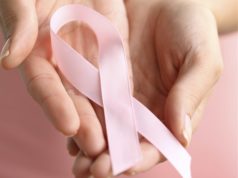Image-based sexual abuse in Australia is increasing, according to new research.
A survey of more than 2000 Australians found 1 in 3 had been victims of image-based abuse, compared with 1 in 5 in 2016.
The survey also found the perpetration of image-based abuse had increased, with 1 in 6 people surveyed reporting they had taken, shared or made threats to share a nude or sexual image of a person without that person's consent, compared with 1 in 10 of those surveyed in 2016.
The findings are detailed in a new report Image-Based Sexual Abuse: An International Study of Victims and Perpetrators, which presents the results of the first cross-national survey on image-based sexual abuse, conducted in Australia, New Zealand and the United Kingdom in 2019.
The Australian survey follows a similar study conducted in 2016 – the first of its kind – allowing the researchers to compare results for the first time.
Image-based sexual abuse is the non-consensual taking, sharing or threatening to share nude or sexual images of a person, including the use of digitally-altered imagery.
Lead author Associate Professor Anastasia Powell said although it's commonly referred to as "revenge porn", the study shows the perpetration of image-based abuse is not limited to jilted ex-lovers out for vengeance.
We found that image-based sexual abuse is used by perpetrators of domestic violence and sexual assault, in stalking and sexual harassment, as well as in threats and bullying by peers and other known people.
Not only this, but we found high numbers of victims had never consented to having their image taken.
Our interviews with victims uncovered cases of people being photographed or filmed without their knowledge in the shower, while sleeping, over Skype and during sex.
We also found no increase in people sending consensual sexy selfies. All this suggests it's not victim behavior driving the rise in abuse, but rather the actions of perpetrators."
Anastasia Powell, lead author
The survey of 2,054 Australians aged 16-64 also found that:
Related Stories
- Research provides new insights into molecular basis of X-chromosome inactivation
- Bayer and Meiogenix join forces to advance agricultural research and development
- Daily moisturizer does not prevent eczema according to new research
- Young people were twice as likely as those aged over 40 to be victims of image-based sexual abuse, with those aged between 20 and 29 years the most likely group to be victims.
- Men and women reported a similar frequency of victimization, but women experienced higher levels of harm from the abuse, including being more than twice as likely as men to report being fearful for their safety from the perpetrator.
- Men were more likely than women to be perpetrators.
- Perpetrators reported that their reasons for the abuse included for fun, to flirt or be sexy, to impress friends or trade images, to control, embarrass, and/or get back at the person in the image.
- The most common sites for distribution were social media, email and mobile messages.
- Rates of image-based sexual abuse victimization were similar across Australia (35.2%), UK (39%) and New Zealand (39%).
Notably, while results showed strong support among survey respondents for image-based sexual abuse to be made a criminal offense (at more than 80%), less than half knew that it that it actually was a crime to take, distribute or threaten to share nude or sexual images of a person without consent.
Co-author Associate Professor Asher Flynn from Monash University said these findings highlighted the need for greater awareness-raising and legal education.
"Though most states and territories in Australia now have specific laws criminalizing image-based sexual abuse, we need to make sure that those laws are enforced – that victims are supported, and perpetrators are held to account," Flynn said.
"There is also a need to build information about the seriousness and harmfulness of image-based sexual abuse into respectful relationships education.
"But most of all, we need community attitudes to change so that whether it is our friend, a family member, a fellow student or co-worker whose image is shared without consent – we place the blame and shame on the perpetrator of the image-based sexual abuse and not on the victim."
Source:
RMIT University











